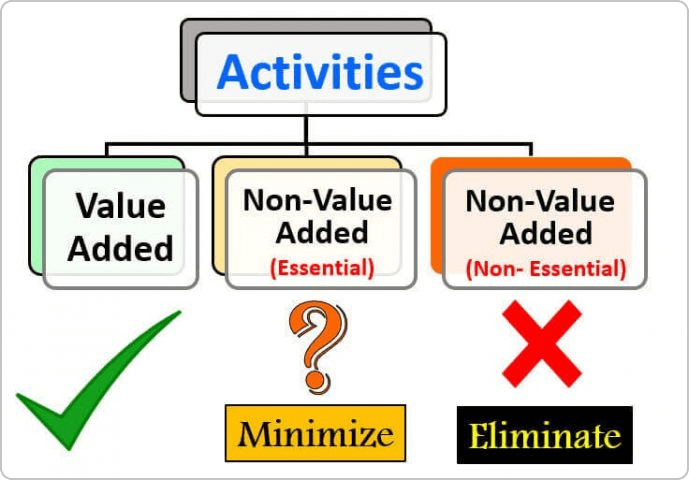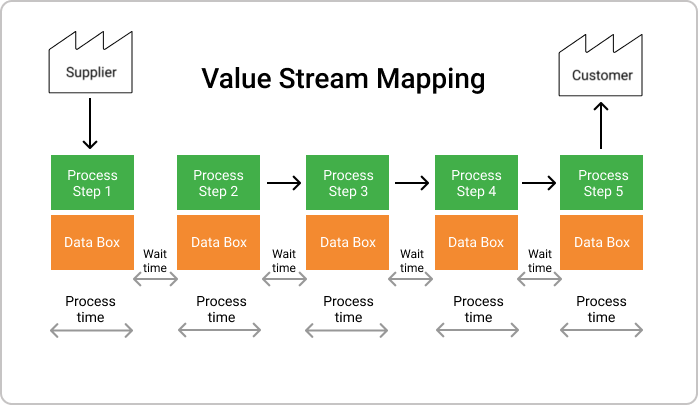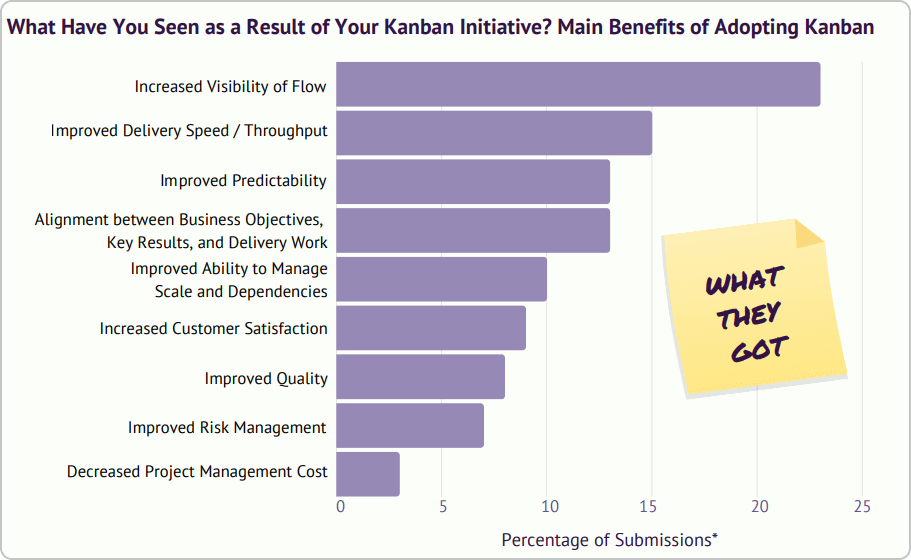"Value is only valuable if someone values your value." As business agility expert Nigel Thurlow has simply put it, identifying value through your customers' perspective is critical to success.
Thus, Lean is developed to deliver unquestionable value to the customer at the right time. To help you with that, the methodology focuses on identifying value-adding steps in your process and minimizing waste activities.
It sounds simple, but there has been a question bothering managers and team members alike for a long time. That is, whether all non-value added activities are wasteful.
To answer that question, let's talk about the Lean perspective on value and waste first.
Value Added vs. Non-Value Added Activities: Understanding Lean's Perspective
A cornerstone of Lean thinking is the importance of properly identifying value by shifting the focus to the customer. Ask yourself, "What do the customers want?" and "What are the customers willing to pay for?".
Value in Lean constitutes everything that the customer is willing to pay for. Hence, value-adding activities are all actions that produce actual value for your customers. Such actions move your product or service one step closer to satisfying your customer's expectations.
On the other end of the spectrum sits the waste. Lean waste refers to all activities that do not add any value to the product or service and respectfully to your customers. Simply put, non-value added activities are everything a customer would not be willing to pay for; hence, they bring waste (inefficiencies) to your process.
However, does this mean all waste is redundant?
Non-Value Added Activities Examples: Pure Waste vs. Necessary Waste
There are two categories of waste in Lean:
- Pure
- Necessary
Pure waste activities and processes are those that don't bring any value to anyone. For example, if we look at the 7 wastes of Muda, we can easily deem waiting on someone (or something) a pure waste. Any activities delaying your delivery would certainly have a negative impact on your organizational efficiency. Extended waiting could affect not only the expected value but also harm your reputation. From an inventory perspective, pure waste could be, for example, a tool that no one uses. I bet we've all been in a situation where companies buy software for internal usage that no one is using. This is pure waste.
Necessary waste is the type of waste that doesn't bring direct value to the customer but ensures that the product/service we deliver does. One of the brightest examples that illustrates a process that falls under this category is quality assurance.
According to all the theories out there, QA is a waste in Lean. Does your customer pay you to test your product before delivering it? No. Are they expecting the product to be reliable and worth the money they are paying? Yes. Therefore, you need to ensure that your product meets their quality expectations.
So quality assurance doesn't bring direct value to your customer but does so for your organization, which makes it necessary.
 Value-adding and non-value added activities, image credit: Digital E-Learnings
Value-adding and non-value added activities, image credit: Digital E-Learnings
Are All Non-Value Added Activities Waste?
There's a ton of knowledge available on what Lean considers a waste, so I'll skip the long story about Muda, Mura, and Muri and focus on the question at hand. The simple answer is yes; anything that your customer is not willing to pay for is a waste.
However, it is also true that you can't remove all waste activities from a workflow because some types of activities that Lean considers waste are important for delivering optimal value to the end customer.
3 Ways to Distinguish Between Pure & Necessary Waste
Often these two types of wastes in Lean are not easy to distinguish due to the complexity of each company's workflow and its specifics.
1. Understand How You Deliver Value by Mapping Your Work Process
To get started, you need to take the usual steps to eliminate all the waste in your system. Mapping your value stream is a good place to start. Doing so will visualize your process in a clear way, including both value added and non-value added (wasteful) steps. This will allow you to analyze your process in depth.
 An example of how value flows in a work process
An example of how value flows in a work process
The more details you include when mapping your value stream, the more knowledge about your process you will gain.
2. Reduce Waste and Improve Your Value Streams with Kanban
Visualizing the exact stages in your value creation can help you elevate process bottlenecks and inefficiencies. The Lean-derived Kanban method of work management can help you do that.
Through practices such as meticulous work visualization on Kanban boards, you can optimize work delivery across multiple teams in a single environment.
 Main benefits of adopting the Kanban method, image credit: State of Kanban Report
Main benefits of adopting the Kanban method, image credit: State of Kanban Report
Breaking down your customer orders into smaller assignments and implementing a portfolio visualization will allow you to see where waste is generated and what contributes to this.
Before rushing into trying to remove all the waste in your system, ask yourself, or even better, hold a meeting with your team and analyze if any of the waste you've identified adds value for your company.
3. Get Input Directly from the People Who Do the Work with Gemba Walk
Another Lean practice originates from the production floor. Understanding how real work happens and how effectively your team performs is at the heart of the Lean technique Gemba Walk.
The approach allows you to observe the actual workflow, engage with employees, and gain knowledge about the work process. Furthermore, it helps you identify non-value added activities and explore continuous improvement opportunities.
In Summary
Regardless of the practices and methods you employ or how you measure success, distinguishing between value added and non-value added activities is crucial.
As the leading expert on the Toyota Production System, Shigeo Shingo, put it: "The most dangerous kind of waste is the waste we do not recognize".
So, even if a waste activity is necessary, try to minimize it to an extent where it takes minimal amounts of resources. But most importantly, ensure you can identify it first by understanding how your processes work.

Iva Krasteva
Content Strategist | Agile Practitioner | Kanban Certified
Iva is a Kanban-certified Agile expert with hands-on experience in SEO, content creation, and Lean practices. She has published dozens of articles on Lean, Agile, and Kanban practical applications. Iva actively promotes collaborative, flexible work environments and regularly shares process optimization insights through writing.




